-
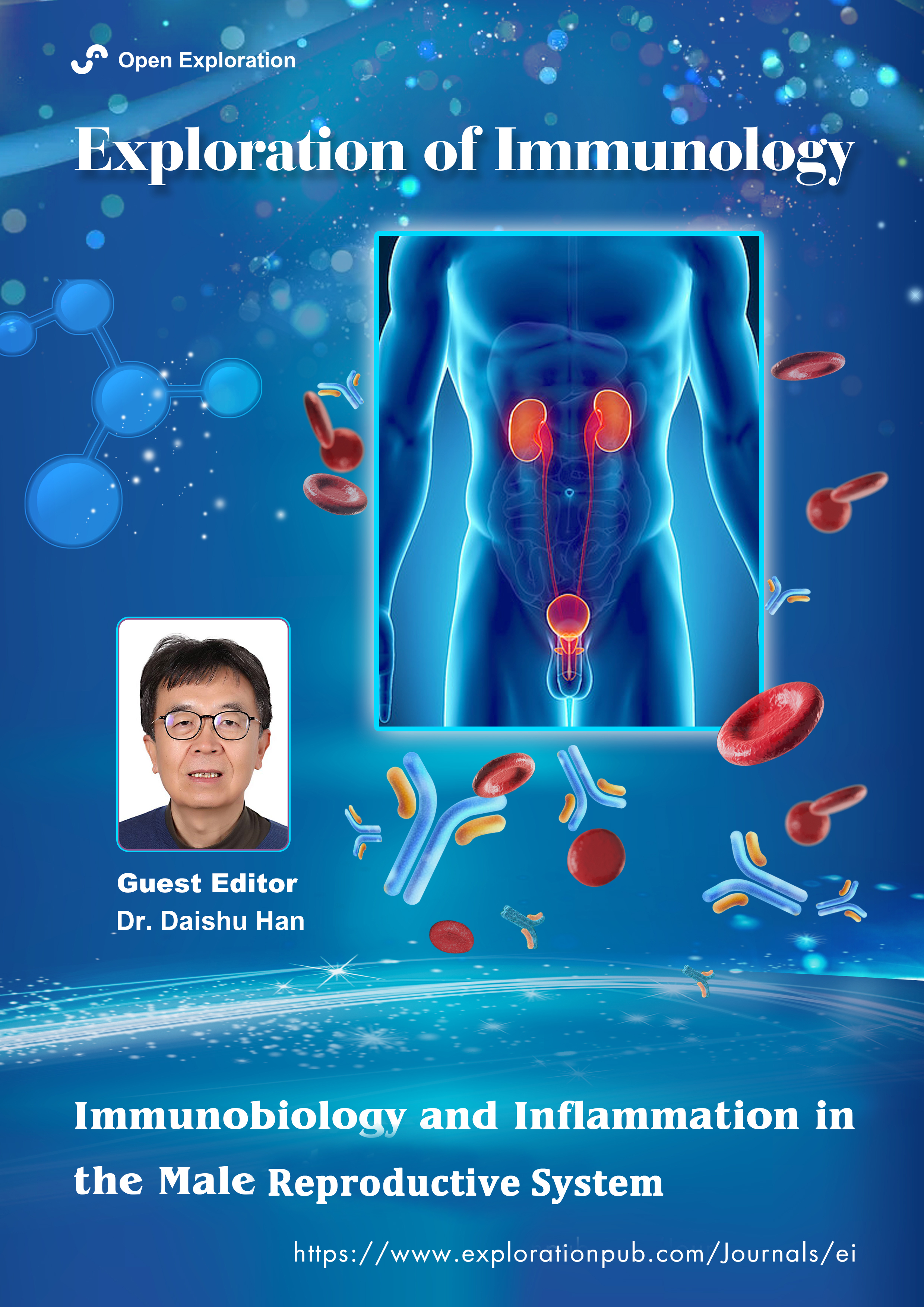 Special Issue Topic
Special Issue TopicImmunobiology and Inflammation in the Male Reproductive System
Submission Deadline: May 30, 2024Guest Editor
Dr. Daishu Han E-Mail
Professor, Department of Cell Biology, Institute of Basic Medical Sciences, Chinese Academy of Medical Sciences & Peking Union Medical College, Beijing, China
Research Keywords: Microbial infection, inflammation, male genital tracts, male fertility
About the Special Issue
The mammalian male reproductive system (MRS) is relatively isolated from other systems of the body considering its anatomical localization and highly organized microenvironment. The MRS is composed of several major organs with great variations in their functions and structures, which include genital glands (testis and epididymis), accessory sex glands (seminal vesicle, prostate, and bulbourethral glands), and penis. These organs are connected by various interlinked genital ducts, including vas deferens, ejaculatory ducts, and urethra.
The main function of the MRS is the maintenance of male fertility, which requires the orchestration of different organs that possess special microenvironment to perform respective functions. Remarkably, the MRS adopts special immunological environments for the protection of immunogenic male germ cells from autoimmune responses and the local innate defense against microbial infections. The testis is a typical immune-privileged organ essential for germ cell development. However, a broad spectrum of viruses has tropism for the testis to escape from systemic immune surveillance by hijacking testicular immune-privileged status. Moreover, numerous types of microbial pathogens, including bacterium, virus, mycoplasma, chlamydia, and parasite, can infect the MRS. To counteract the invading microbial organisms, the MRS is well equipped with local innate defense system. The mechanisms underlying immune privilege and local innate defense are noteworthy.
While the MRS adopts elaborate immune environments to avoid autoimmune response and counteract microbial infections, the infectious and autoimmune inflammations are frequently occurred in this system and may severely impair male fertility and life quality. The pathogenesis of the inflammation in individual organs of the MRS, particularly the testis, epididymis, seminal vesicle and prostate, is associated with their anatomical structure, immune environment and immunogenic pathogens. The mechanisms underlying the inflammation in the MRS are largely unclear, which impede the prevention and treatment of the diseases. Further basic researches in the field can aid in the development of preventive and therapeutic strategies of diseases.
This Special Issue aims to the current understanding of immune microenvironments, inflammatory diseases and therapeutic approaches in the MRS. The review and original articles in the fields are welcome to this special issue.
Keywords: Mammalian male reproductive system, inflammatory, immune microenvironments, therapeutic approaches
Published Articles
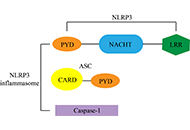 Research progress on NLRP3 inflammasomes in male reproductive immunityOpen AccessReviewThe male reproductive immune system plays a pivotal role in safeguarding sperm from immune attacks and preventing the incursion of foreign pathogens. Nucleotide-binding and oligomerization domain-li [...] Read more.Xue Zhang ... Donghui HuangPublished: August 22, 2024 Explor Immunol. 2024;4:490–501
Research progress on NLRP3 inflammasomes in male reproductive immunityOpen AccessReviewThe male reproductive immune system plays a pivotal role in safeguarding sperm from immune attacks and preventing the incursion of foreign pathogens. Nucleotide-binding and oligomerization domain-li [...] Read more.Xue Zhang ... Donghui HuangPublished: August 22, 2024 Explor Immunol. 2024;4:490–501
DOI: https://doi.org/10.37349/ei.2024.00154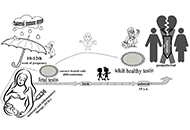 Healthy functioning mammal male reproductive system is determined during prenatal development: long-term consequences of maternal immune activationOpen AccessReviewThe reproductive axis of male mammals implies a coordinated interaction of its three components: a population of gonadotropin-releasing hormone (GnRH)—producing neurons of the hypothalamus, gonado [...] Read more.Marina IzvolskayaPublished: August 07, 2024 Explor Immunol. 2024;4:465–475
Healthy functioning mammal male reproductive system is determined during prenatal development: long-term consequences of maternal immune activationOpen AccessReviewThe reproductive axis of male mammals implies a coordinated interaction of its three components: a population of gonadotropin-releasing hormone (GnRH)—producing neurons of the hypothalamus, gonado [...] Read more.Marina IzvolskayaPublished: August 07, 2024 Explor Immunol. 2024;4:465–475
DOI: https://doi.org/10.37349/ei.2024.00152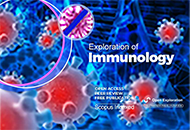 Testicular inflammation in male reproductive systemOpen AccessReviewThe control of the immune system, neuroendocrine system, and energy metabolism is essential for the physiological process of male reproduction. The hypothalamic-pituitary-testicular (HPT) axis regul [...] Read more.Prity Yadav, Pratap Chand MaliPublished: August 05, 2024 Explor Immunol. 2024;4:446–464
Testicular inflammation in male reproductive systemOpen AccessReviewThe control of the immune system, neuroendocrine system, and energy metabolism is essential for the physiological process of male reproduction. The hypothalamic-pituitary-testicular (HPT) axis regul [...] Read more.Prity Yadav, Pratap Chand MaliPublished: August 05, 2024 Explor Immunol. 2024;4:446–464
DOI: https://doi.org/10.37349/ei.2024.00151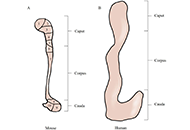 Recent advances in the study of the structure and function of the epididymisOpen AccessReviewTesticular sperm maturation is critical for establishing male fertility. Spermatozoa undergo remodeling of sperm proteins and changes in lipid and ribonucleic acid composition during transport in th [...] Read more.Chuxiong Wang ... Donghui HuangPublished: May 17, 2024 Explor Immunol. 2024;4:309–324
Recent advances in the study of the structure and function of the epididymisOpen AccessReviewTesticular sperm maturation is critical for establishing male fertility. Spermatozoa undergo remodeling of sperm proteins and changes in lipid and ribonucleic acid composition during transport in th [...] Read more.Chuxiong Wang ... Donghui HuangPublished: May 17, 2024 Explor Immunol. 2024;4:309–324
DOI: https://doi.org/10.37349/ei.2024.00142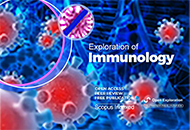 Immune cell dynamics in male reproductive health: orchestrating immune privilege and inflammatory responsesOpen AccessMini ReviewEpididymitis or epididymo-orchitis is a common urological condition in males characterized by scrotal pain, swelling, and potential urinary symptoms. Although antibiotics can eliminate the causative [...] Read more.Yiming Zhang ... Ming WangPublished: February 28, 2024 Explor Immunol. 2024;4:106–114
Immune cell dynamics in male reproductive health: orchestrating immune privilege and inflammatory responsesOpen AccessMini ReviewEpididymitis or epididymo-orchitis is a common urological condition in males characterized by scrotal pain, swelling, and potential urinary symptoms. Although antibiotics can eliminate the causative [...] Read more.Yiming Zhang ... Ming WangPublished: February 28, 2024 Explor Immunol. 2024;4:106–114
DOI: https://doi.org/10.37349/ei.2024.00131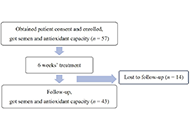 Ningmitai capsule improves the semen quality of male infertile with chronic prostatitis by antioxidant and anti-inflammatoryOpen AccessOriginal ArticleAim: To observe the effects of Ningmitai capsule on semen parameters of infertile patients with chronic prostatitis (CP) and explore the mechanisms. Methods: A total of 43 patients diagnose [...] Read more.Xiaoyu Wu ... Xinzong ZhangPublished: December 14, 2023 Explor Immunol. 2023;3:590–597
Ningmitai capsule improves the semen quality of male infertile with chronic prostatitis by antioxidant and anti-inflammatoryOpen AccessOriginal ArticleAim: To observe the effects of Ningmitai capsule on semen parameters of infertile patients with chronic prostatitis (CP) and explore the mechanisms. Methods: A total of 43 patients diagnose [...] Read more.Xiaoyu Wu ... Xinzong ZhangPublished: December 14, 2023 Explor Immunol. 2023;3:590–597
DOI: https://doi.org/10.37349/ei.2023.00123 -
-
Ongoing Special Issues
-
Completed Special Issues